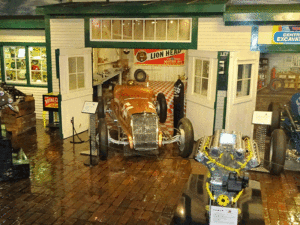When one thinks of historic artifacts, picturesque art galleries, quirky museums and lots of fun-filled attractions, Southeastern Nebraska may not come to mind – but it should!
An hour or so, just outside of the state’s major city of Omaha are Nebraska City, home of Arbor Day Farm where America’s Arbor Day was founded, the retirement community of Brownsville which boasts a number of museums and trendy Lincoln, home of the University of Nebraska Lincoln (UNL) and their beloved intercollegiate athletic teams the Nebraska Cornhuskers.
Arbor Day Farm located in the rolling hills of the Missouri River Valley was the original homestead of J. Sterling Morton, the founder of Arbor Day and the U.S. Secretary of Agriculture under president Grover Cleveland from 1858-61. Morton was a great proponent of planting trees where prairie grass once stood. Visitors will enjoy seeing exotic trees, greenhouses, orchards, a vineyard, a treehouse with a birds eye view, a hazelnut research centre and so much more. The best way to see it is aboard the Arbor Day Farms Tree Adventure, a leaf-shaped, covered trolley pulled by a tractor.
Over the trees you can see Arbor Lodge State Historical Park, where Morton’s four-bedroom humble home once stood replaced by a mansion, built by his son Joy Morton, the founder of Morton Salt Company after his father’s passing. It was built as a summer home suited for entertaining. Tours are offered.
In the centre of all this nature is Lied Lodge & Conference Center. The newly renovated property offers guests 140 comfortable rooms with great views, a casual restaurant and lounge, spa, exercise area, Olympic-sized pool, Jacuzzi and sauna.
READ: TRAVEL TO NEBRASKA FOR FUN AND LOCAL ARTWORK
Before leaving Nebraska City be sure to check out the Missouri River Basin Lewis & Clark Interpretive Trail & Visitors Center to learn all about the Corps of Discovery Mission from 1804-06, led by Meriwether Lewis and William Clark to explore the Louisiana Purchase. Other museums of note in town are The Old Freighters Museum and the abruptly abandoned Kregel Windmill Factory established in 1879.
You wouldn’t think a town with a population of 141 would have nine museums including the Flatwater Folk Art Museum housed in the 1884 American Gothic Howe Church. Tourists can stay at the River Inn Resort, a new floating B&B docked on the banks of the Missouri River and partake in a riverboat cruise aboard the inn’s Spirit of Brownville.
If bustling city life is more your style, then Lincoln is for you. The Historic Haymarket District, once an unremarkable downtown area, now houses the Pinnacle Bank Arena, hotels, a community plaza, and lots of boutiques, restaurants and bars.
Back in Lincoln you can visit the Sheldon Museum of Art with 12,000 works by mostly American artists from impressionists to abstracts and everything in between housed at the university. The museum is surrounded by the Sheldon Sculpture Garden, an extraordinary space with 30 monumental works.

If unusual is your thing, Lincoln can fit that bill too. There’s Speedway Motors Museum of American Speed, a must-see for racing fans with three floors of colourful exhibits. In keeping with the theme of wheels, is the National Museum of Roller Skating, a small space with the largest collection of antique roller skates in the world.
A visit to recently reopened Nebraska History Museum is an enriching learning experience. This state was an important gateway for the settlements of the west. The exhibits include Nebraska’s Jewish history.
A Persian lamb coat belonging to Hedwig Rosenberg from Frankfurt, Germany is on display. In 1942, she and her husband were sent to Treblinka concentration camp where they were killed. Before she was seized, she packed valuables in a suitcase including her coat. A neighbour buried the suitcase for safekeeping.
After the war, the neighbour dug up the coat – sending it off to the Rosenberg’s son Ludwig, who had immigrated to Lincoln. Ludwig’s wife, Ilse, wore it before eventually donating it to the Nebraska State Historical Society.
Also on display is the hood and robe of Larry Trapp, one-time Grand Dragon of the Ku Klux Klan for the Realm of Nebraska. A member of the Klan since 1988, he targeted mainly African-Americans and Jews.
Trapp renounced this life of hate thanks to Cantor Michael Weisser and his wife Julie’s compassion. When he made threatening phone calls to the Weissers, they responded with love. Almost blind and wheelchair-bound, remarkably Trapp eventually moved into the Weisser home. He converted to Judaism, and died in 1992, in the care of his adopted family. Trapp is buried in the Jewish section of Lincoln’s Wyuka Cemetery.
For information about Nebraska, online: www.visitnebraska.com.
